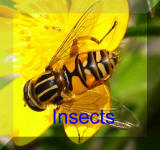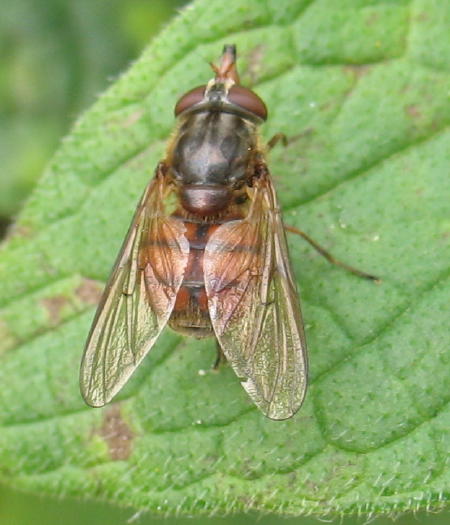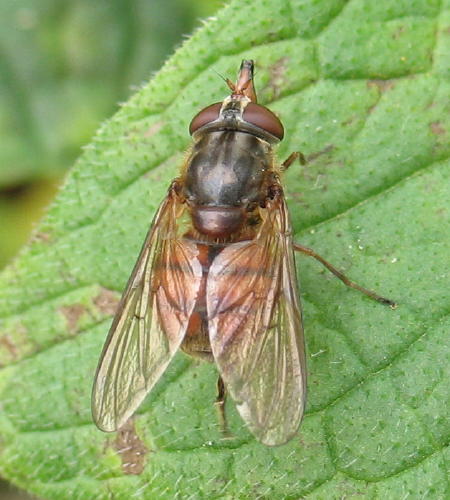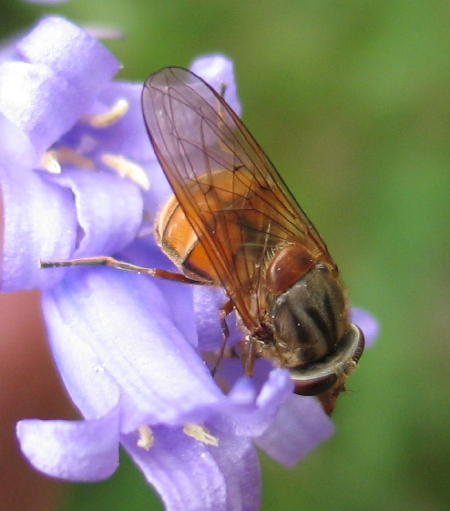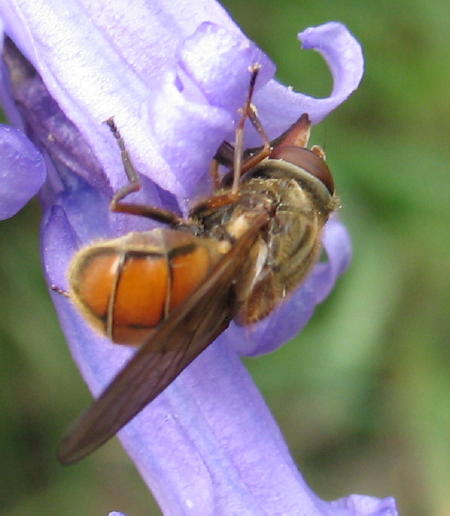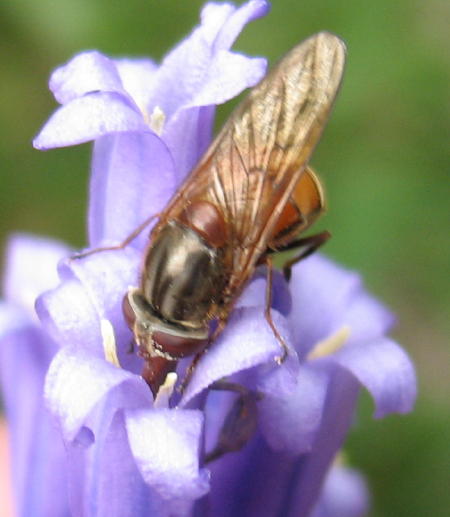Length
Biology:
The larvae live in cow dung, fragments of which adhere to their bodies, ensuring that they are well camouflaged. However, adults are found in areas where cattle are absent, raising the possibility that dung of other species, or even other media such as wet compost, may be used. Occurs in meadows, gardens, hedgerows, woodland edges, etc. Adults are usually seen visiting flowers, especially pink or purple flowers with concealed nectar sources, or resting on vegetation. The long extension to the face, and the long proboscis sited beneath, gives access to deep flowers, such as Silene, which other hoverflies cannot exploit.
Distribution:
Widespread and very common throughout Britain, including many of the islands, but the numbers of records received per year has fluctuated widely and there is a possibility they are scarcer in the year following a dry season
IMAGE 19292 WITH (C) 2008 COLIN DUKE
IMAGE 17293 WITH (C) 2008 COLIN DUKE
IMAGE 17979 WITH (C) 2008 COLIN DUKE
IMAGE 17973 WITH (C) 2008 COLIN DUKE
IMAGE 17981 WITH (C) 2008 COLIN DUKE

